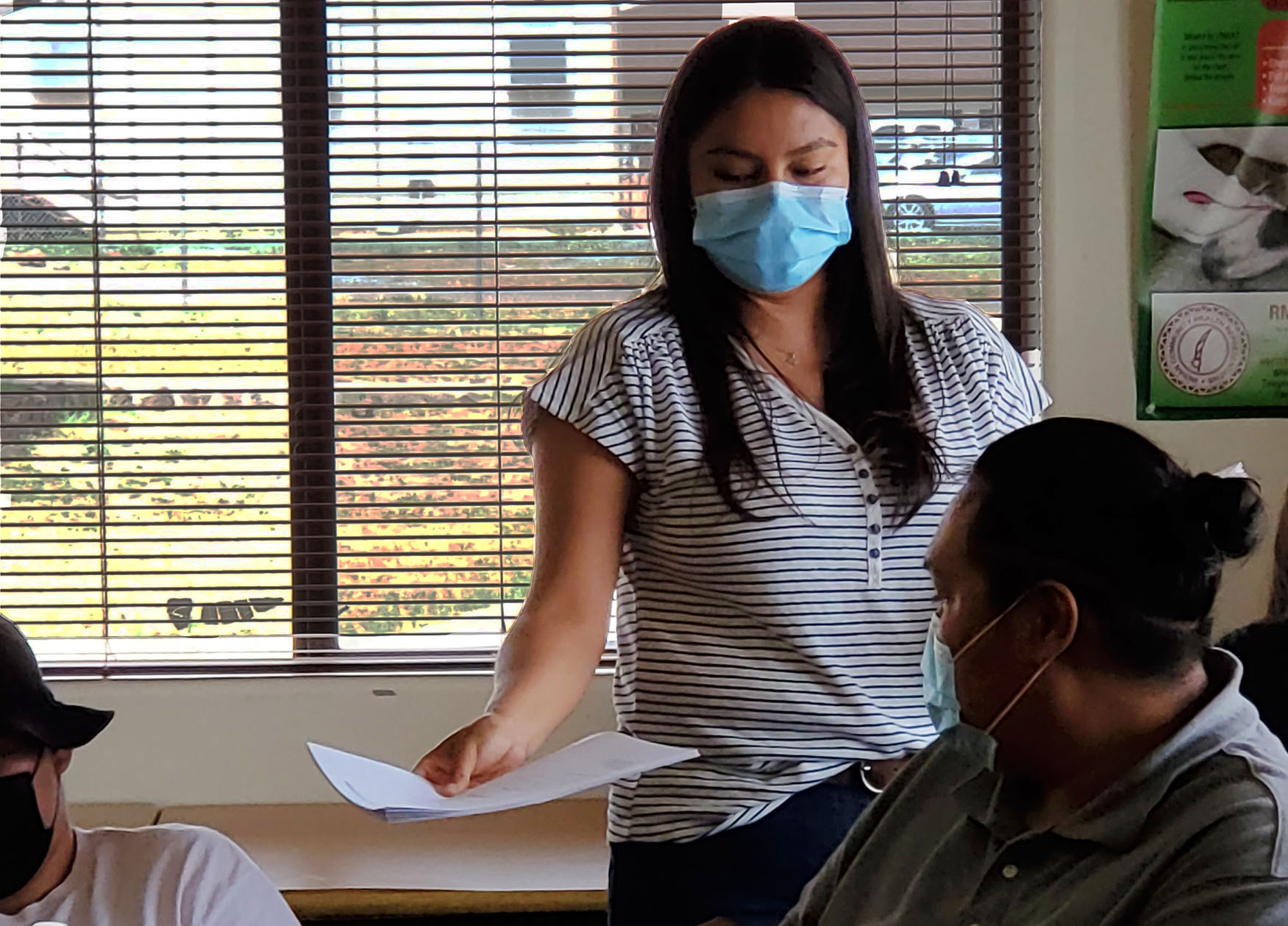Navajo undergraduate students successful in educating community on COVID-19

A group of researchers from Northern Arizona University and Diné College found that employing public health students to deliver COVID-19 information to their own community is an effective way to address residents’ vaccine concerns and hesitancy.
The community-based research study on the Navajo Nation, called the Diné (Navajo) Teachings and Public Health Students Informing Peers and Relatives about Vaccine Education (RAVE) intervention, involved creating culturally relevant COVID-19 educational materials, and training 16 Diné College public health students and community health representatives to use these materials and monitor outcomes with 46 Navajo Nation residents who participated in the intervention and responded to pre- and post-training surveys.
The RAVE intervention results were recently published in Frontiers in Public Health in an article titled “Diné Teachings and Public Health Students Informing Peers and Relatives about Vaccine Education: Providing Diné (Navajo)-centered COVID-19 Education Materials Using Student Health Messengers.”
Eligibility criteria for research study participants were that they must:
- Not have received a COVID-19 vaccine.
- Be 18 years or older.
- Have been identified as any race and gender.
- Have resided or worked on the Navajo Nation.
The students recruited 46 adults for the health education sessions. Sessions were either one-on-one or group sessions. Navajo Nation residents who participated in the intervention completed a 16-element retrospective pretest. In the pretest, participants reported their attitudes, perceived behavioral control, subjective norms and intent to receive a COVID-19 vaccine after the education sessions.
The researchers found that Navajo Nation residents were more likely to consider vaccination and to get vaccinated after the education sessions with the Diné College undergraduate students whom the team called “health messengers.”
After attending the education sessions, 56 percent of the participants from the Navajo Nation said they believe that getting the COVID-19 vaccine was a good idea; 66 percent believe that the vaccine would prevent COVID-19; and 53 percent think the vaccine would protect the community. There was also a 43 percent increase in willingness to consider getting the COVID-19 vaccine and a 77 percent increase in residents who were intending to get the vaccine.
The research team’s survey results suggest that undergraduate students are an important public health resource in Indigenous communities and possibly in other underserved communities.
“I believe this model was very successful,” said Marissa Tutt, research coordinator for the Center for Health Equity Research (CHER) and first author of the publication. “Students felt confident in their abilities to relay information about the COVID-19 vaccine and connect with community members on a deeper level, through k’é.”
K’é in Navajo is a system of kinship or a deep connection to others. These Navajo students used the personal and cultural capital afforded by k’é to establish an important social connection that allowed them to recruit people who were distrustful of the healthcare system. These students were considered credible and sincere based on their relationships as relatives and friends.
“I can see this strategy utilized more in future projects as it not only provides the opportunity for students to apply their public health knowledge but also to give back to their communities,” Tutt said.
The research team also included Chassity Begay, research assistant, CHER; Shawndeena George, teaching assistant, Diné College; Christopher Dickerson, assistant professor, Diné College; Carmella Kahn, assistant professor, Diné College; Mark Bauer, co-principal investigator and professor, Diné College; and Nicolette Teufel-Shone, co-principal investigator and associate director of CHER and professor in the NAU Department of Health Sciences.
Developing the study
The research team created COVID-19 vaccine materials using previous collaboration materials, publicly available materials, and suggestions from interviews with Diné traditional knowledge holders. The results were four health education items on COVID-19 vaccines: COVID-19 frequently asked questions and myths; quarantine vs. isolation; and traditional knowledge of COVID-19.
The students and CHRs reviewed the materials to ensure they were culturally appropriate and addressed knowledge gaps about COVID-19 vaccines using a consensus decision-making method. They evaluated the materials on criteria for language and content, format and organization, and imagery and colors.
The researchers then trained Diné public health education students and Navajo Nation CHRs to use the materials. They were also trained on the technology of vaccine development, clinical trials and vaccine myths propagating on social media.
According to the publication, part of the strength of RAVE was its connection to the long-term partnership between Diné College and NAU, the Navajo Native American Research Center for Health (NARCH) Partnership.
“The Navajo NARCH Partnership is committed to providing experiential, hands-on learning opportunities to future health professionals,” said Teufel-Shone. “RAVE offered such an opportunity and demonstrated that undergraduate students can be an outreach resource in Indigenous communities, and bring a diversity of experience, skills and passion to design implement and evaluate innovative strategies to achieve health equity for the Diné people.”